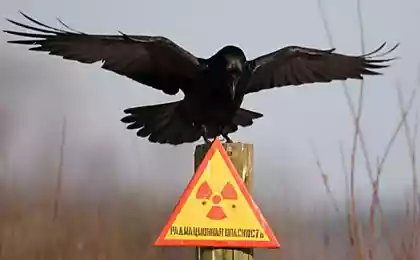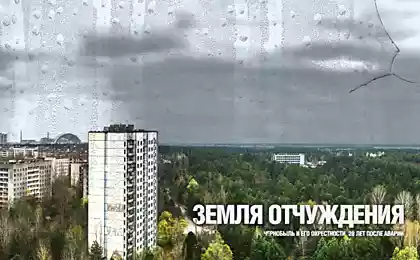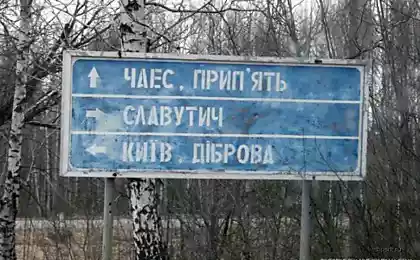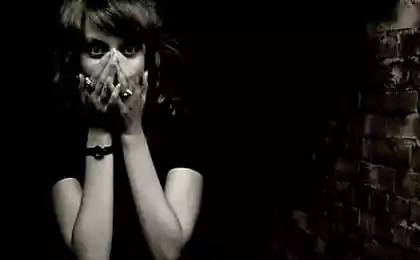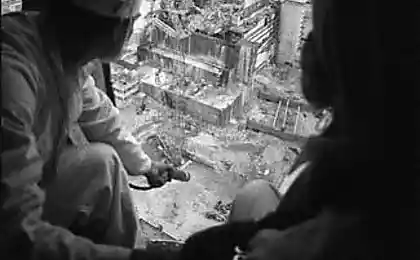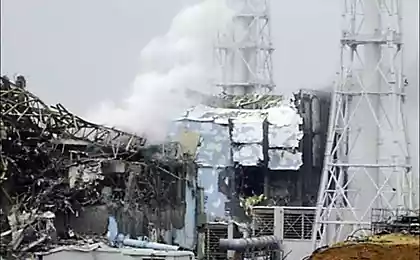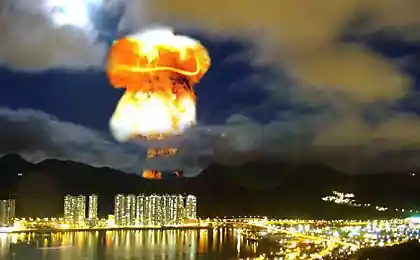657
How irrational our fear of radiation?
Radioactivity causes the primitive fears of many people, but Jeff watts argues that the real harm may only result in excessive prejudice to the dangers of radiation. Hereinafter in the first person.
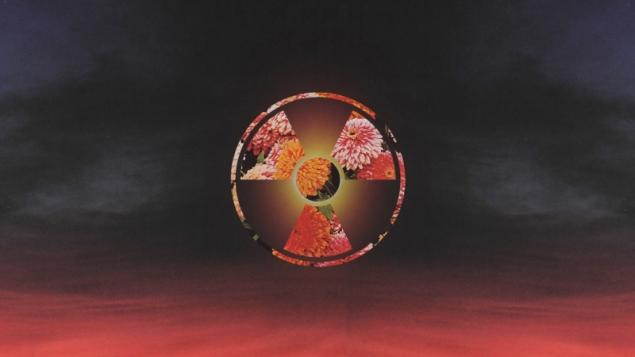
Bad Gastein, Austrian Alps. Wednesday, 10 a.m., early March, cold and snow — just not at the entrance to the main gallery which was once a gold mine. Wrapped in a Bathrobe, wearing Slippers, I curled into one of the carriages of the narrow-gauge railway that will carry me through the two kilometres to the heart of the radhausberg mountains by.
Fifteen minutes later we're there and I'm ready to enjoy what Wellness brochure. Pleasure, of course, is a subjective term. The temperature inside the dimly lit tunnels of the mountain about 40 degrees Celsius and the humidity is 100%. Sweat already beginning to flow. More importantly, I breathe the atmosphere, rich in radon.
Wait. Radon? Radioactive gas? And yet here I am, I don't see any warning icons that are not protected by a lead apron, in the group of people who have paid to come to the Gasteiner Heilstollen ("healing galleries") and willingly, even eagerly, undergo debilitating in terms of physical discomfort because they believe in the controversial theory that small doses of radiation, not only harmless, but also stimulates good health.
Our view of radiation and its risks are quite complex and for the most part — despite the delights of Heilstollen — negative. We all know about the effects of nuclear weapons, about the apocalyptic scenarios of nuclear winter, about cancer and birth defects caused by high dose radiation, and so on. Image of mushroom clouds bring fear to our hearts 40 years, but the more we are afraid of what these pictures are seen.
Invisible threat always annoy other forest, and radiation you can't see. Then you won't be able to control. Many years ago, the veteran scholar told me how much he wished that the radiation was painted in blue color. If we were able to see her, we would have developed better methods of fighting and would be less nervous about it. Traditional stealth largest commercial consumers of radiation, the nuclear industry, did not help. Too late she realized that to do something behind closed doors is the best way to feed public suspicion. So perhaps it is understandable why many people say that the only safe radiation is its absence (x-rays and CT scans do not count).
However, I do not agree. I believe that a justified fear of high and uncontrolled radiation has undermined our willingness to see what risks she is at a low level, acceptable or amenable to control. Imagine if we treated the fire as well as to nuclear energy: we have responded to fires in homes with prohibition of cooking at home.
And I'm afraid that as a result of these exaggerated fears, we are not able to direct the radiation in a useful direction.
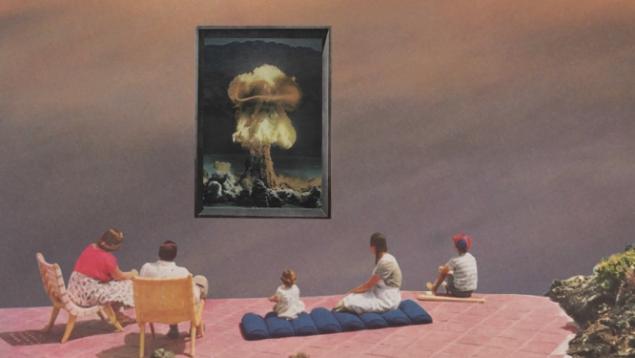
To assess the degree of our willingness to hit the red button in the event of a radiation leak, remember the events of 2011 in Japan. Earthquake by force in 9 points and subsequent tsunami that struck the country on March 11 were a disaster. Killed 20 000 people, more than 500 square kilometers of land was flooded with water. Families lost homes, businesses, livelihoods.
It was not so much time as the media discovered that one of the victims of the tsunami was the Fukushima nuclear power plant. Since then, the story has ceased to be a natural phenomenon and was, in fact, anthropogenic. The script was horrific: a nuclear Holocaust.
Of the 20 000 deaths, some were directly linked by the earthquake, while others were caused by drowning. How many deaths have been caused by the radiation leak from the damaged plant? No. In the section on the health effects of the Fukushima tragedy, the report of the Scientific Committee on the effects of atomic radiation the UN wrote: "No radiation-related deaths or acute diseases among the workers and General public exposed to radiation during the incident, was not observed."
The radiation dose to the public, said the report, was generally low or very low. "A marked increase in morbidity related to the effects of radiation among the members of the society or their descendants is expected."
This does not diminish the effect of the event. Three of the nuclear power plant reactors suffered a large amount of radioactive material was released into the environment. Twelve workers believe that received doses of iodine-131, which increases the risk of thyroid cancer. Another 160 workers experienced a dose sufficient to increase the risk of other cancers. "However, according to the report, any increase in the incidence of cancer in this group, as expected, it will be impossible to allocate because of the difficulty confirming such a low probability of disease against the normal statistical fluctuations among cancer diseases."
In short, while a terrible natural phenomenon killed thousands of people, the attention of Japan and the world is focused on one component of the tragedy, which killed no one. Radiation exposure can shorten the life of those who were directly exposed to it, but its effects will be so small that we can never know for sure whether this was related to the event or not.
When it comes to catastrophe, nuclear overshadows the natural. Our sense of the relative importance of things are distorted to the point of absurdity.
Chernobyl, of course, was much worse. Poorly designed reactor, operating at a weak security mechanisms in a bureaucratic and secretive society, was a recipe for disaster. On 26 April 1986, all the ingredients mixed together — ironically, during an experimental and unsuccessful security check. One of the reactors overheated, caught fire, exploded and released huge amount of radioactive material into the atmosphere. 116 000 people were evacuated; a further 270 000 were living in "severely polluted" area.
It's awful. For 134 workers involved in the cleanup first, it was very bad. The dose that they received was sufficient to cause acute radiation syndrome; 28 of them died. After this distrust of official sources of information, coupled with the spread of gossip expected created a disproportionate fear. One of the rumors that began to wander immediately following the incident, stated that the mass grave was buried 15 000 victims of the nuclear disaster. Such rumors live to this day; another in 2000 decided that while 300 000 people died from radiation.
In reality, although the catastrophe was huge, it was less inflated. Assembled a group of who experts to study the consequences of the accident and miscalculation of future health effects. Based on the average radiation exposure of evacuees, people were not evacuated and thousands of workers involved in the cleanup, the report wrote that death from cancer in these three groups increased by not more than 4%. The findings of the report were challenged and disputed.
"Of course, was a rising incidence of thyroid cancer, says James Smith, Professor of environmental Sciences at the University of Portsmouth, coordinator of the three multinational projects of the European Union on the environmental consequences of the accident. But with a caveat: — the Council has not put enough efforts to stop people from eating contaminated food and drinking contaminated milk, from which particularly affected the children." In other words, not all these deaths were inevitable.
Any death for any reason in any industry is regrettable and ideally, it should not be. But is nuclear power inherently more dangerous than other forms of energy? In the 2002 review conducted by the International energy Agency, compared the deaths per unit of energy produced from several energy sources, such as coal, biomass, wind and nuclear energy. The figures included each stage of the production of energy from the production of any necessary raw materials to the medical consequences of the creation and use of this energy.
Coal came in first place, but nuclear energy was the most gentle for your health. When you think about energy production from coal, about such aspects as the threat of mines and air pollution, this arrangement does not seem surprising. But while most Asian cities wraps up coal smog thicker and thicker, deaths in the coal industry does not cause even a fraction of irrational fear comparable to the fear of nuclear energy. Perhaps it is the invisibility of radiation adds fuel to the fire of the sensational reports about relatively minor events — and this light, in all its sensationalism, resonates with our fear and stresses it.
Fear невидимым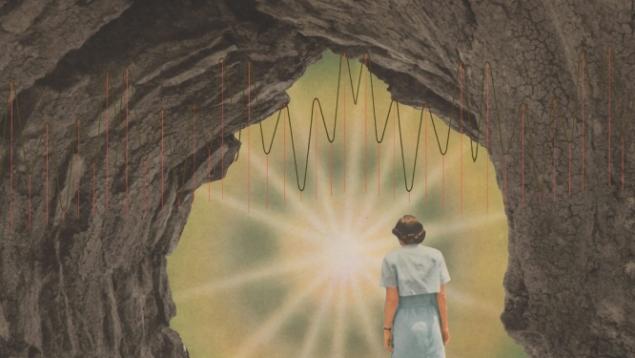
A number of States responded to the events in Japan in 2011. Germany — the most. Although this country belongs to nuclear energy without enthusiasm, she recently confirmed the necessity of extending the period during which it will operate its existing nuclear plants. After the events at Fukushima this course had to be changed. The criticism of course was powerless, appealing to remember the last time when in Germany there was a serious earthquake not to mention tsunami.
Oddly enough, despite the fact that the German nation is considered the most ardent opponent of nuclear energy in Europe, the Germans represent a significant percentage of visitors are rich in radon clinic in bad Gastein.
In the tunnel of the Gasteiner Heilstollen, where I spent half an hour breathing in the radon, there was room for twenty or so people who decided to risk for the sake of possible benefits in the fight against rheumatoid arthritis, asthma, sinusitis and psoriasis.
My treating physician the day of the visit was Simon Gutl. He told me about clinical trials, surveys, evidence of the popularity of the treatment, and the patients who were able to reduce or even to abandon drug therapy, which was forced to resort. How much truth there was in these certificates — don't know, but I was amazed at how enthusiastic some people are looking for the same force of nature from which others are ready to flee to the edge of the world. One of my colleagues visited a treatment tunnel in the seventies again.
Managing Director Gasteiner Heistollen is Christoph Koestinger, a physicist by training. About 9,000 patients, he told me, carry a full Spa therapy daily for 2-4 weeks, thousands more take courses shorter. He's well aware of conflicting feelings on the subject of radiation: "I divide people into three groups, he says. — Those who are really afraid of radiation, does not come to us. Then there are people who are not afraid of radiation and they say it's good. And there are many people who are a bit scared, but can you explain the face of risk."
He is also well aware of the widespread aversion to nuclear energy across Germany. "Some patients convince themselves that radon is natural radiation," — he explaining, adding that as a physicist, he realizes the futility of any distinction between "natural" and "unnatural" radiation.
Alpine treatment center ergonomicall radiation I take on Board, lying in bed and feeling uncomfortable in the galleries of Gastein, inhaling radon? Very little. I was in mine a little over an hour. Kostiner believes that during the three-week treatment programs, patients receive a dose of about 1.8 mSv, or about three quarters of the background radiation for the whole year — because we are all exposed to low-level radiation all the time.
First, there is cosmic radiation from the Sun and other stars in our galaxy and beyond. How much we receive depends on the altitude of where we live, and from fluctuations in the Earth's magnetic field. Is the radiation of the Earth itself, including radon. There is also a geographical factor: in some places, radon leaks into the atmosphere in large quantities. Solid natural radioactive substances, uranium and thorium in rocks and soil, also contribute. Total annual average radiation dose is 2.4 mSv. It's like 120 times to do a chest x-ray.
Most of what we know about the effects of radiation on humans comes from high doses that accompany nuclear explosions, like bombs dropped in 1945 on Hiroshima and Nagasaki. Fund studies on the effects of radiation (RERF) studied the health of 100 000 survived both the bombing and the health of their children. The findings were disappointing and surprising. The risk of diseases other than leukemia, cancer types began to emerge 10 years after the event. The degree of risk depended on the distance of the individual to the place of explosion, as well as its age and sex. For example, everyone who was 2.5 miles with a 10 percent chance was given to the tumor. In the case of the leukemia death began to occur two years after exposure and reached a peak four to six years.
I didn't expect to find insights on Hiroshima and Nagasaki, so this is what happened with the surviving children. It has been speculated that they are likely to develop certain diseases, but it turned out that it is not.
"At the moment we have not noticed any excess cancer and non-cancer mortality, says Roy shore, chief of research Department of RERF. It indicates that a large part of the painful experience is evident in the next 30 years, so cannot completely exclude a late effect. Nevertheless, the results are still a little surprised. — Based on experimental data from fruit flies to mice, they could [later effects] to expect."
Unresolved disputes about radiation the most hot issue is the true extent of harm (or benefits, if the precedent Gasteiner Heilstollen convinced you) that it causes at low levels.
There are two schools of thought. The generally accepted view is based on the known correlation between high levels of radiation exposure and the subsequent risk of developing cancer. If you place them side by side, they would essentially cancel each other out. The uncertainty appears only in the case of discussion of very low doses and the threshold at which risk disappears.
"At very low doses — in the range of, say, CT scan — we have no convincing evidence or otherwise, says shore. It's a matter of interpretations by". He believes that there is no threshold there is, adhering to the so-called linear-quadratic (LQ) hypothesis.
Professor Gerry Thomas is at the Department of molecular pathology at Imperial College London and is very interested in the effects of radiation. As she indicates, the disease caused by radiation, are also caused by other things, so in the case of low-level exposure should be big sample to prove otherwise. "Most scientists agree that there is no evidence of the danger of radiation below 100 millisieverts".
Nevertheless, the majority of authorities overseeing radiation, adhere to the LQ-model. The safety limits set extremely low. The upper limit for exposure to a member of the English society, for example, is 1 millisieverts per year — less than half the average annual dose of background radiation.
Speaking at the clinic of bad Gastein, Kostiner takes a pragmatic point of view. It balances the risk of low-level radiation that he calls "the scientifically proven effect" of treatment. "We have a hypothetical risk from radiation, he says. But even in the worst case it is minimal compared to the risks of the drugs that our patients usually stop taking. If there is a risk we can live with that. If scientific knowledge suggests that there is a threshold, it is also good."
The General conclusion from all this is that radiation is not as harmful as commonly believed. In addition, and this is often forgotten in the argument, the difference between very low risk and very low risk, but a little larger, has no practical meaning. In fact, the statutes and decisions are concerned with minimizing the risk of exposure to radiation, in the broad scheme of things, be counterproductive.
Who cares?
What does it matter that many people are afraid of radiation? In the end, millions irrationally afraid of everything from spiders to flying. Somehow we cope. The planet revolves.
There are two examples that provide a good illustration of why fear of radiation is important. Both kind of problems for individuals and for society.
First, it is our reluctance to use nuclear energy. Since the 1970-ies, the world production of nuclear electricity has experienced steady growth. In the 90s, growth continued, but at a slower pace. Since 2000 it has leveled off and then began to wobble. Even amid the enthusiasm for the production of energy without coal, the use of nuclear energy, free from carbon, began to decline.
There are many reasons for this, including the cost of construction of nuclear power plants and their decommissioning. But public suspicion, perhaps (!), played a key role in the political decision-making. We watched as the nuclear power plant began to come to the end of his life. Fearing that the cities will turn off lights, we started to extend their life. But some countries refused to replace them, reasoning that the potential risk is greater than the potential role of nuclear power in reducing climate change. It becomes apparent that we are moving in the other direction.
Personal effects of the excessive fear of radiation are, in fact, even more destructive. Evidence of this can be found in the light of events after Chernobyl and Fukushima. The group of experts established to study the Chernobyl disaster, said that she had a serious impact on mental health and well-being of the local population, which was evacuated.
"Go the sad story of Chernobyl and the recent Fukushima, they say, people avoided society, because many believed them radioactive or contaminated in some way, says Smith. — One of the conclusions of the who decided that the social and psychological consequences of Chernobyl was worse than direct exposure to radiation".
He recalls meeting a fisherman who was fishing in a toxic lake in the exclusion zone of the Chernobyl NPP. "This guy said that left: the Second world war forced me to leave the house, so a little bit of radiation will not make."
"You can't say for sure, since all it's stats, but he has probably made the right decision. Of course, he risked, as eating local food that has been contaminated, but if he had to move to another place and live a new life, not the fact that his life would be long."
Despite the fact that the evacuated residents of the surrounding area of Fukushima suffered less from the outlandish rumors than their counterparts at Chernobyl, they are also faced with the consequences of unjustified fear of radiation and its unpredictable effects on health. A survey among the evacuees in 2012 showed that one in five suffered mental trauma.
Stress and subsequent problems with mental health are unavoidable when in need of evacuation and relocation. But zealous application of the precautionary principle, the assumptions of the worst effects of radiation and high threshold security a disservice to the people. Coupled with unfounded rumors, driven by their secrecy or official unwillingness to confront irrational prejudices, radiation was the worst nightmare of everyone.
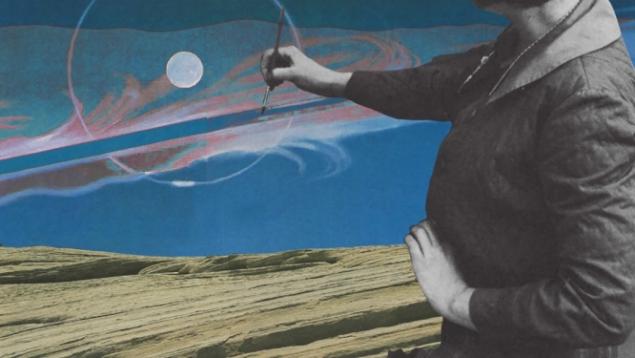
Driving the train through the tunnel away from the Gasteiner Heilstollen, I remembered the idea of colouring of radiation in the blue color. Drawing Parallels with the high humidity, I started thinking about what would happen if we consciously faced with radiation. Not staining it, but maybe in a different way.
Imagine if our eyes could see far beyond the visible region of the spectrum and to act as a radiation detector, to be able to convert all the signals in the brain to visual sensation — or in the ear. Or if our skin prickled in the presence of radiation. Radiation is everywhere, it is ubiquitous. If we were able to feel it, it would constantly distract us.
One of the alternatives are obvious: install a cheap and commonly available Geiger counters sized wrist watch that will remain silent until the radiation level will not exceed the permissible limits. Wearing such counters would be surprised if these detectors never made noise. Not during my trip through the mountain. Not during a CT scan. Not even during the trip to the exclusion zone of Chernobyl.
Would that be enough to reassure you? published
P. S. And remember, just changing your mind — together we change the world! ©
Source: hi-news.ru

Bad Gastein, Austrian Alps. Wednesday, 10 a.m., early March, cold and snow — just not at the entrance to the main gallery which was once a gold mine. Wrapped in a Bathrobe, wearing Slippers, I curled into one of the carriages of the narrow-gauge railway that will carry me through the two kilometres to the heart of the radhausberg mountains by.
Fifteen minutes later we're there and I'm ready to enjoy what Wellness brochure. Pleasure, of course, is a subjective term. The temperature inside the dimly lit tunnels of the mountain about 40 degrees Celsius and the humidity is 100%. Sweat already beginning to flow. More importantly, I breathe the atmosphere, rich in radon.
Wait. Radon? Radioactive gas? And yet here I am, I don't see any warning icons that are not protected by a lead apron, in the group of people who have paid to come to the Gasteiner Heilstollen ("healing galleries") and willingly, even eagerly, undergo debilitating in terms of physical discomfort because they believe in the controversial theory that small doses of radiation, not only harmless, but also stimulates good health.
Our view of radiation and its risks are quite complex and for the most part — despite the delights of Heilstollen — negative. We all know about the effects of nuclear weapons, about the apocalyptic scenarios of nuclear winter, about cancer and birth defects caused by high dose radiation, and so on. Image of mushroom clouds bring fear to our hearts 40 years, but the more we are afraid of what these pictures are seen.
Invisible threat always annoy other forest, and radiation you can't see. Then you won't be able to control. Many years ago, the veteran scholar told me how much he wished that the radiation was painted in blue color. If we were able to see her, we would have developed better methods of fighting and would be less nervous about it. Traditional stealth largest commercial consumers of radiation, the nuclear industry, did not help. Too late she realized that to do something behind closed doors is the best way to feed public suspicion. So perhaps it is understandable why many people say that the only safe radiation is its absence (x-rays and CT scans do not count).
However, I do not agree. I believe that a justified fear of high and uncontrolled radiation has undermined our willingness to see what risks she is at a low level, acceptable or amenable to control. Imagine if we treated the fire as well as to nuclear energy: we have responded to fires in homes with prohibition of cooking at home.
And I'm afraid that as a result of these exaggerated fears, we are not able to direct the radiation in a useful direction.

To assess the degree of our willingness to hit the red button in the event of a radiation leak, remember the events of 2011 in Japan. Earthquake by force in 9 points and subsequent tsunami that struck the country on March 11 were a disaster. Killed 20 000 people, more than 500 square kilometers of land was flooded with water. Families lost homes, businesses, livelihoods.
It was not so much time as the media discovered that one of the victims of the tsunami was the Fukushima nuclear power plant. Since then, the story has ceased to be a natural phenomenon and was, in fact, anthropogenic. The script was horrific: a nuclear Holocaust.
Of the 20 000 deaths, some were directly linked by the earthquake, while others were caused by drowning. How many deaths have been caused by the radiation leak from the damaged plant? No. In the section on the health effects of the Fukushima tragedy, the report of the Scientific Committee on the effects of atomic radiation the UN wrote: "No radiation-related deaths or acute diseases among the workers and General public exposed to radiation during the incident, was not observed."
The radiation dose to the public, said the report, was generally low or very low. "A marked increase in morbidity related to the effects of radiation among the members of the society or their descendants is expected."
This does not diminish the effect of the event. Three of the nuclear power plant reactors suffered a large amount of radioactive material was released into the environment. Twelve workers believe that received doses of iodine-131, which increases the risk of thyroid cancer. Another 160 workers experienced a dose sufficient to increase the risk of other cancers. "However, according to the report, any increase in the incidence of cancer in this group, as expected, it will be impossible to allocate because of the difficulty confirming such a low probability of disease against the normal statistical fluctuations among cancer diseases."
In short, while a terrible natural phenomenon killed thousands of people, the attention of Japan and the world is focused on one component of the tragedy, which killed no one. Radiation exposure can shorten the life of those who were directly exposed to it, but its effects will be so small that we can never know for sure whether this was related to the event or not.
When it comes to catastrophe, nuclear overshadows the natural. Our sense of the relative importance of things are distorted to the point of absurdity.
Chernobyl, of course, was much worse. Poorly designed reactor, operating at a weak security mechanisms in a bureaucratic and secretive society, was a recipe for disaster. On 26 April 1986, all the ingredients mixed together — ironically, during an experimental and unsuccessful security check. One of the reactors overheated, caught fire, exploded and released huge amount of radioactive material into the atmosphere. 116 000 people were evacuated; a further 270 000 were living in "severely polluted" area.
It's awful. For 134 workers involved in the cleanup first, it was very bad. The dose that they received was sufficient to cause acute radiation syndrome; 28 of them died. After this distrust of official sources of information, coupled with the spread of gossip expected created a disproportionate fear. One of the rumors that began to wander immediately following the incident, stated that the mass grave was buried 15 000 victims of the nuclear disaster. Such rumors live to this day; another in 2000 decided that while 300 000 people died from radiation.
In reality, although the catastrophe was huge, it was less inflated. Assembled a group of who experts to study the consequences of the accident and miscalculation of future health effects. Based on the average radiation exposure of evacuees, people were not evacuated and thousands of workers involved in the cleanup, the report wrote that death from cancer in these three groups increased by not more than 4%. The findings of the report were challenged and disputed.
"Of course, was a rising incidence of thyroid cancer, says James Smith, Professor of environmental Sciences at the University of Portsmouth, coordinator of the three multinational projects of the European Union on the environmental consequences of the accident. But with a caveat: — the Council has not put enough efforts to stop people from eating contaminated food and drinking contaminated milk, from which particularly affected the children." In other words, not all these deaths were inevitable.
Any death for any reason in any industry is regrettable and ideally, it should not be. But is nuclear power inherently more dangerous than other forms of energy? In the 2002 review conducted by the International energy Agency, compared the deaths per unit of energy produced from several energy sources, such as coal, biomass, wind and nuclear energy. The figures included each stage of the production of energy from the production of any necessary raw materials to the medical consequences of the creation and use of this energy.
Coal came in first place, but nuclear energy was the most gentle for your health. When you think about energy production from coal, about such aspects as the threat of mines and air pollution, this arrangement does not seem surprising. But while most Asian cities wraps up coal smog thicker and thicker, deaths in the coal industry does not cause even a fraction of irrational fear comparable to the fear of nuclear energy. Perhaps it is the invisibility of radiation adds fuel to the fire of the sensational reports about relatively minor events — and this light, in all its sensationalism, resonates with our fear and stresses it.
Fear невидимым

A number of States responded to the events in Japan in 2011. Germany — the most. Although this country belongs to nuclear energy without enthusiasm, she recently confirmed the necessity of extending the period during which it will operate its existing nuclear plants. After the events at Fukushima this course had to be changed. The criticism of course was powerless, appealing to remember the last time when in Germany there was a serious earthquake not to mention tsunami.
Oddly enough, despite the fact that the German nation is considered the most ardent opponent of nuclear energy in Europe, the Germans represent a significant percentage of visitors are rich in radon clinic in bad Gastein.
In the tunnel of the Gasteiner Heilstollen, where I spent half an hour breathing in the radon, there was room for twenty or so people who decided to risk for the sake of possible benefits in the fight against rheumatoid arthritis, asthma, sinusitis and psoriasis.
My treating physician the day of the visit was Simon Gutl. He told me about clinical trials, surveys, evidence of the popularity of the treatment, and the patients who were able to reduce or even to abandon drug therapy, which was forced to resort. How much truth there was in these certificates — don't know, but I was amazed at how enthusiastic some people are looking for the same force of nature from which others are ready to flee to the edge of the world. One of my colleagues visited a treatment tunnel in the seventies again.
Managing Director Gasteiner Heistollen is Christoph Koestinger, a physicist by training. About 9,000 patients, he told me, carry a full Spa therapy daily for 2-4 weeks, thousands more take courses shorter. He's well aware of conflicting feelings on the subject of radiation: "I divide people into three groups, he says. — Those who are really afraid of radiation, does not come to us. Then there are people who are not afraid of radiation and they say it's good. And there are many people who are a bit scared, but can you explain the face of risk."
He is also well aware of the widespread aversion to nuclear energy across Germany. "Some patients convince themselves that radon is natural radiation," — he explaining, adding that as a physicist, he realizes the futility of any distinction between "natural" and "unnatural" radiation.
Alpine treatment center ergonomicall radiation I take on Board, lying in bed and feeling uncomfortable in the galleries of Gastein, inhaling radon? Very little. I was in mine a little over an hour. Kostiner believes that during the three-week treatment programs, patients receive a dose of about 1.8 mSv, or about three quarters of the background radiation for the whole year — because we are all exposed to low-level radiation all the time.
First, there is cosmic radiation from the Sun and other stars in our galaxy and beyond. How much we receive depends on the altitude of where we live, and from fluctuations in the Earth's magnetic field. Is the radiation of the Earth itself, including radon. There is also a geographical factor: in some places, radon leaks into the atmosphere in large quantities. Solid natural radioactive substances, uranium and thorium in rocks and soil, also contribute. Total annual average radiation dose is 2.4 mSv. It's like 120 times to do a chest x-ray.
Most of what we know about the effects of radiation on humans comes from high doses that accompany nuclear explosions, like bombs dropped in 1945 on Hiroshima and Nagasaki. Fund studies on the effects of radiation (RERF) studied the health of 100 000 survived both the bombing and the health of their children. The findings were disappointing and surprising. The risk of diseases other than leukemia, cancer types began to emerge 10 years after the event. The degree of risk depended on the distance of the individual to the place of explosion, as well as its age and sex. For example, everyone who was 2.5 miles with a 10 percent chance was given to the tumor. In the case of the leukemia death began to occur two years after exposure and reached a peak four to six years.
I didn't expect to find insights on Hiroshima and Nagasaki, so this is what happened with the surviving children. It has been speculated that they are likely to develop certain diseases, but it turned out that it is not.
"At the moment we have not noticed any excess cancer and non-cancer mortality, says Roy shore, chief of research Department of RERF. It indicates that a large part of the painful experience is evident in the next 30 years, so cannot completely exclude a late effect. Nevertheless, the results are still a little surprised. — Based on experimental data from fruit flies to mice, they could [later effects] to expect."
Unresolved disputes about radiation the most hot issue is the true extent of harm (or benefits, if the precedent Gasteiner Heilstollen convinced you) that it causes at low levels.
There are two schools of thought. The generally accepted view is based on the known correlation between high levels of radiation exposure and the subsequent risk of developing cancer. If you place them side by side, they would essentially cancel each other out. The uncertainty appears only in the case of discussion of very low doses and the threshold at which risk disappears.
"At very low doses — in the range of, say, CT scan — we have no convincing evidence or otherwise, says shore. It's a matter of interpretations by". He believes that there is no threshold there is, adhering to the so-called linear-quadratic (LQ) hypothesis.
Professor Gerry Thomas is at the Department of molecular pathology at Imperial College London and is very interested in the effects of radiation. As she indicates, the disease caused by radiation, are also caused by other things, so in the case of low-level exposure should be big sample to prove otherwise. "Most scientists agree that there is no evidence of the danger of radiation below 100 millisieverts".
Nevertheless, the majority of authorities overseeing radiation, adhere to the LQ-model. The safety limits set extremely low. The upper limit for exposure to a member of the English society, for example, is 1 millisieverts per year — less than half the average annual dose of background radiation.
Speaking at the clinic of bad Gastein, Kostiner takes a pragmatic point of view. It balances the risk of low-level radiation that he calls "the scientifically proven effect" of treatment. "We have a hypothetical risk from radiation, he says. But even in the worst case it is minimal compared to the risks of the drugs that our patients usually stop taking. If there is a risk we can live with that. If scientific knowledge suggests that there is a threshold, it is also good."
The General conclusion from all this is that radiation is not as harmful as commonly believed. In addition, and this is often forgotten in the argument, the difference between very low risk and very low risk, but a little larger, has no practical meaning. In fact, the statutes and decisions are concerned with minimizing the risk of exposure to radiation, in the broad scheme of things, be counterproductive.
Who cares?

What does it matter that many people are afraid of radiation? In the end, millions irrationally afraid of everything from spiders to flying. Somehow we cope. The planet revolves.
There are two examples that provide a good illustration of why fear of radiation is important. Both kind of problems for individuals and for society.
First, it is our reluctance to use nuclear energy. Since the 1970-ies, the world production of nuclear electricity has experienced steady growth. In the 90s, growth continued, but at a slower pace. Since 2000 it has leveled off and then began to wobble. Even amid the enthusiasm for the production of energy without coal, the use of nuclear energy, free from carbon, began to decline.
There are many reasons for this, including the cost of construction of nuclear power plants and their decommissioning. But public suspicion, perhaps (!), played a key role in the political decision-making. We watched as the nuclear power plant began to come to the end of his life. Fearing that the cities will turn off lights, we started to extend their life. But some countries refused to replace them, reasoning that the potential risk is greater than the potential role of nuclear power in reducing climate change. It becomes apparent that we are moving in the other direction.
Personal effects of the excessive fear of radiation are, in fact, even more destructive. Evidence of this can be found in the light of events after Chernobyl and Fukushima. The group of experts established to study the Chernobyl disaster, said that she had a serious impact on mental health and well-being of the local population, which was evacuated.
"Go the sad story of Chernobyl and the recent Fukushima, they say, people avoided society, because many believed them radioactive or contaminated in some way, says Smith. — One of the conclusions of the who decided that the social and psychological consequences of Chernobyl was worse than direct exposure to radiation".
He recalls meeting a fisherman who was fishing in a toxic lake in the exclusion zone of the Chernobyl NPP. "This guy said that left: the Second world war forced me to leave the house, so a little bit of radiation will not make."
"You can't say for sure, since all it's stats, but he has probably made the right decision. Of course, he risked, as eating local food that has been contaminated, but if he had to move to another place and live a new life, not the fact that his life would be long."
Despite the fact that the evacuated residents of the surrounding area of Fukushima suffered less from the outlandish rumors than their counterparts at Chernobyl, they are also faced with the consequences of unjustified fear of radiation and its unpredictable effects on health. A survey among the evacuees in 2012 showed that one in five suffered mental trauma.
Stress and subsequent problems with mental health are unavoidable when in need of evacuation and relocation. But zealous application of the precautionary principle, the assumptions of the worst effects of radiation and high threshold security a disservice to the people. Coupled with unfounded rumors, driven by their secrecy or official unwillingness to confront irrational prejudices, radiation was the worst nightmare of everyone.

Driving the train through the tunnel away from the Gasteiner Heilstollen, I remembered the idea of colouring of radiation in the blue color. Drawing Parallels with the high humidity, I started thinking about what would happen if we consciously faced with radiation. Not staining it, but maybe in a different way.
Imagine if our eyes could see far beyond the visible region of the spectrum and to act as a radiation detector, to be able to convert all the signals in the brain to visual sensation — or in the ear. Or if our skin prickled in the presence of radiation. Radiation is everywhere, it is ubiquitous. If we were able to feel it, it would constantly distract us.
One of the alternatives are obvious: install a cheap and commonly available Geiger counters sized wrist watch that will remain silent until the radiation level will not exceed the permissible limits. Wearing such counters would be surprised if these detectors never made noise. Not during my trip through the mountain. Not during a CT scan. Not even during the trip to the exclusion zone of Chernobyl.
Would that be enough to reassure you? published
P. S. And remember, just changing your mind — together we change the world! ©
Source: hi-news.ru
